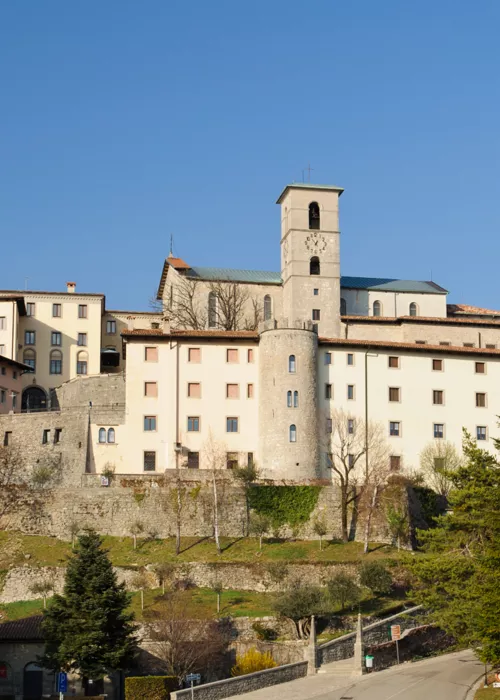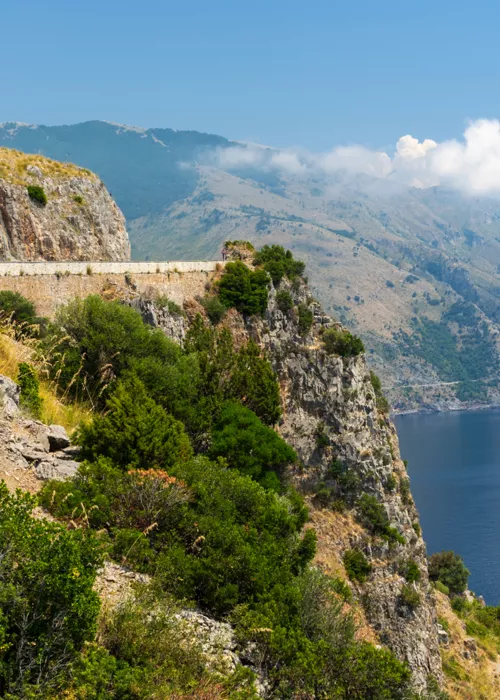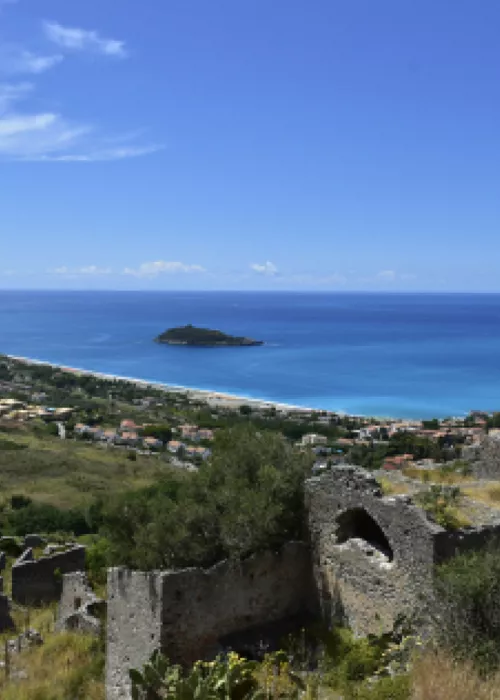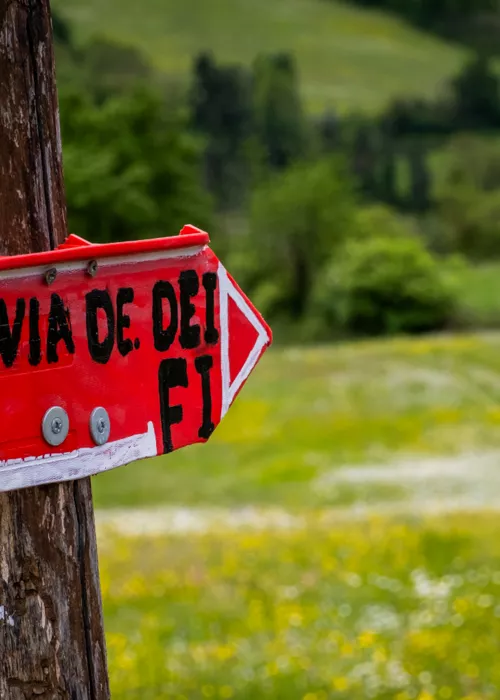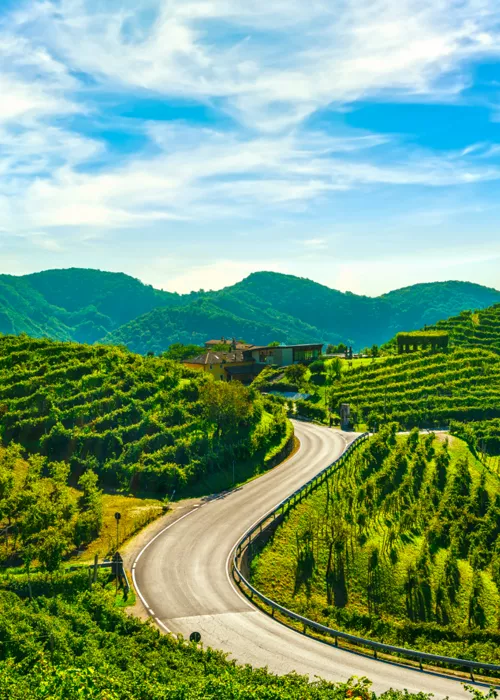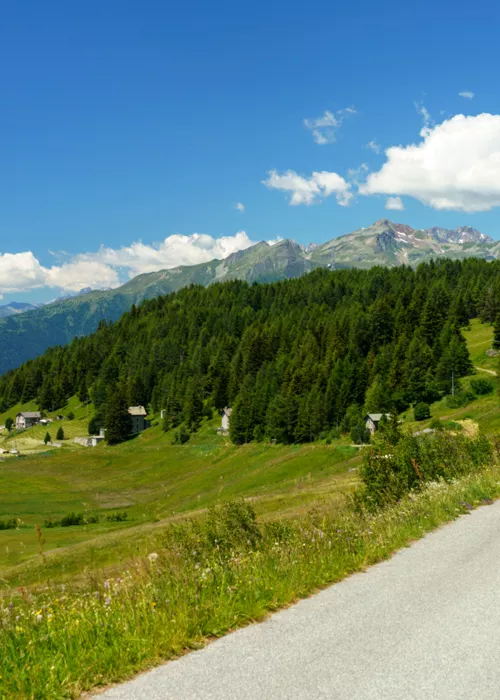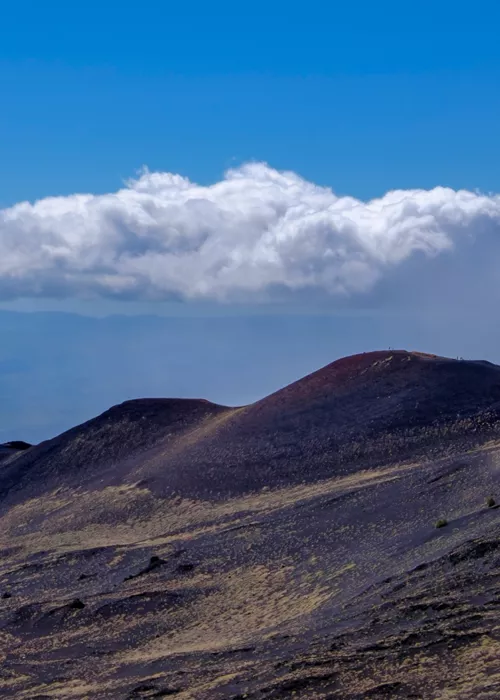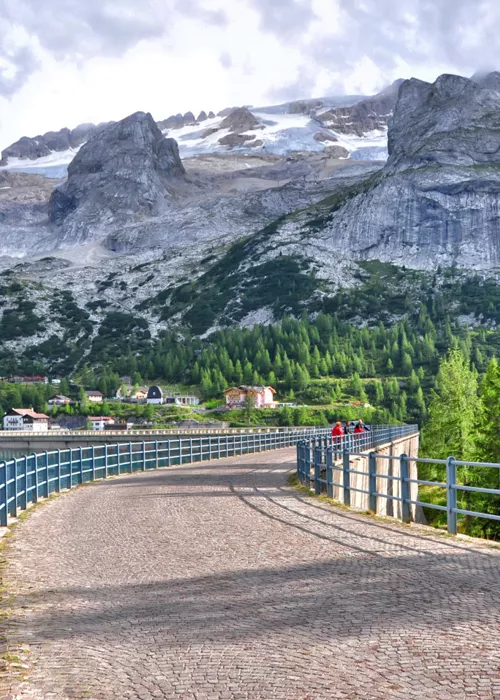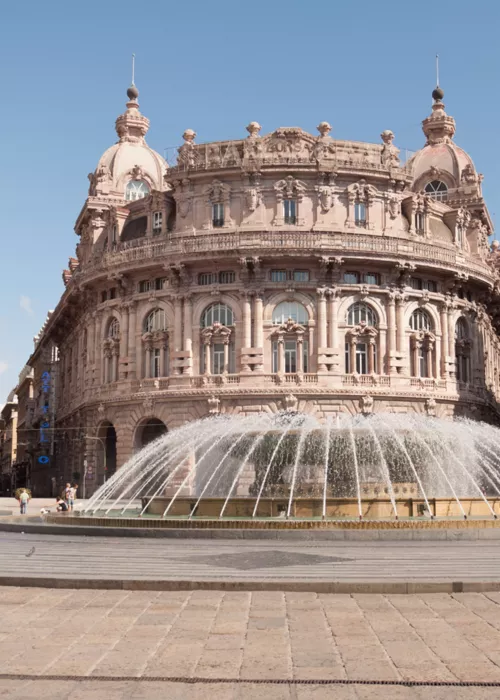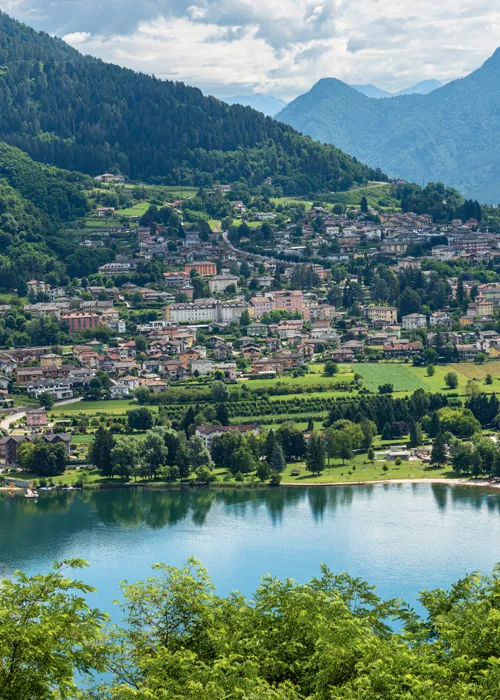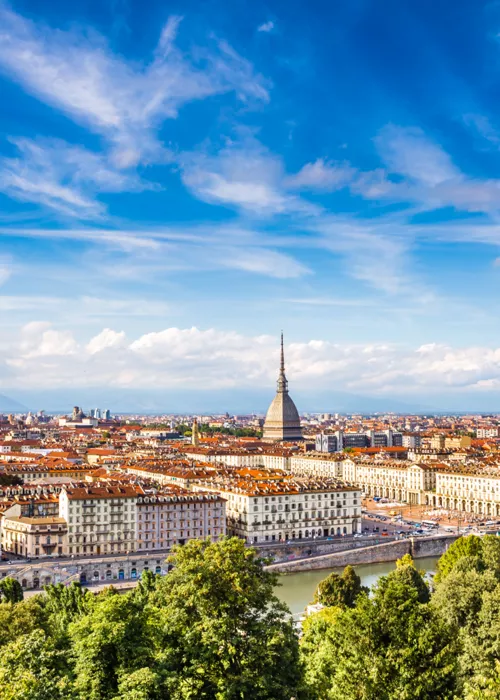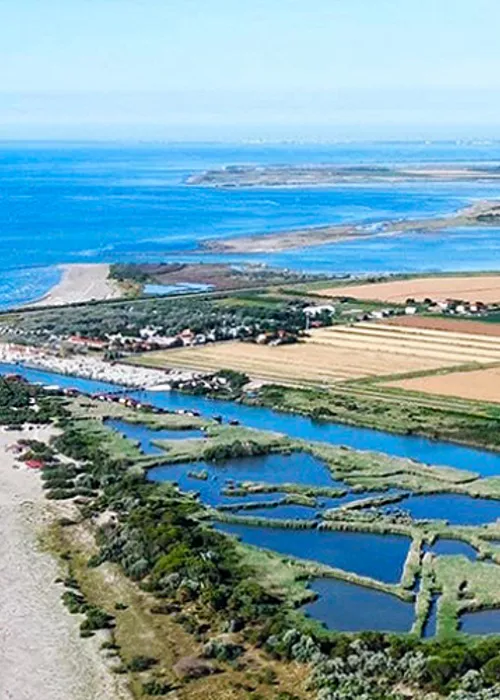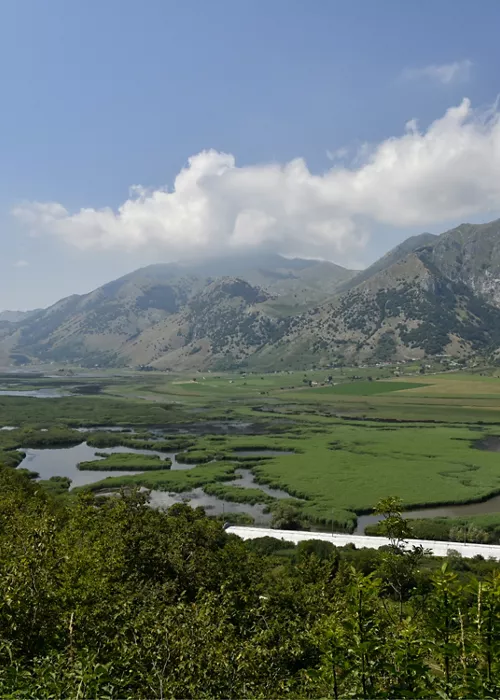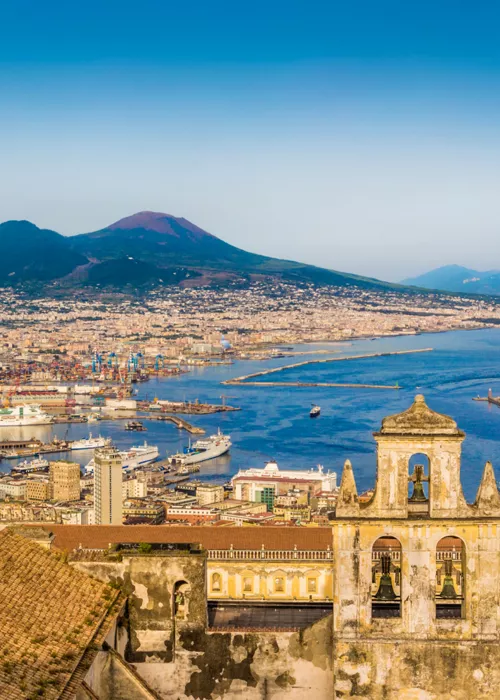Landing in Santa Teresa Gallura

After following the Route of the Giants and the Emerald Coast, heading north-west along the coast, we arrive at the port of Santa Teresa Gallura, the perfect place to set off to discover Gallura: only 12 nautical miles from M. Cala Gavetta to the east and 22 from Isola Rossa to the west, situated in a narrow inlet that forms a naturally protected landing place. It is from this fascinating port that we will begin our journey, the beating heart of the town, a crossroads of cultural and commercial exchanges with an ancient history dating back to Roman times. The original name, Longonis, refers to the characteristic elongated fjord that surrounds the port. It is guarded to the east by the medieval castle and to the west by the Spanish tower, a reminder of its strategic importance. Don't miss the Torre Longonsardo, built between 1577 and 1599 by order of King Philip II of Spain. The 11 metre high granite tower played a key role in the 1802 revolution against the Sardinian-Piedmontese government. The next stop is the quarries of Capo Testa, where the Romans extracted the precious local granite. Here you can admire the rough and semi-finished columns that once adorned patrician villas and monuments. Not far away, the Capo Testa lighthouse, built in 1845, is a point of reference for navigation in northern Sardinia and offers a spectacular view of the Strait of Bonifacio. A few kilometres from the town centre, on the promontory of Capo Testa, are the beaches of Rena di Ponente and Rena di Levante, characterised by white-grey granite sculpted by the wind, lush Mediterranean vegetation and crystalline waters, ideal for swimming in any wind condition. From the Capo Testa lighthouse, a path leads to Cala Spinosa and Cala Francese, ideal for diving and snorkelling. Continuing along a path, you reach Cala Grande, immersed in the Mediterranean scrub, ideal for a relaxing walk among uncontaminated nature and bizarrely shaped granite boulders. Then we come to the archaeological site of Lu Brandali, dating back to the 14th and 10th centuries B.C., which offers a fascinating insight into the Nuraghic civilisation, with its complex of nuraghs, towers, tombs of giants and a village of huts. The artefacts that have been unearthed provide a valuable insight into everyday life at the time. The itinerary ends with a visit to the Punta Contessa Park, part of the SIC "Capo Testa" area, which offers panoramic paths through the Mediterranean scrub, with breathtaking views of the Strait of Bonifacio and Corsica, and a remarkable biodiversity. Santa Teresa Gallura also invites you to discover the local flavours with typical dishes such as zuppa gallurese, chiusini and traditional desserts such as acciuleddhi, to be accompanied by a glass of Vermentino di Gallura. A unique combination
Aglientu and its surroundings

After a refreshing night in Santa Teresa Gallura, we set off for the Torre di Vignola, which stands on a promontory between Punta di li Francesi and Vignola Aglientu. The tower, built in 1605 to defend the coast against Saracen attacks, is a 12-metre truncated cone made of local granite and has a large casemate inside, divided into three sectors, which once housed the garrison and heavy artillery. An external staircase, added in the mid-18th century, facilitates access and provides fascinating evidence of local history and coastal defence strategies. A short distance away is the Tuttusoni Nuraghe, which stands on a hill overlooking the whole area as far as the sea. Built with granite blocks of various sizes, the nuraghe preserves a circular chamber, originally covered with a false dome, and two niches along the walls. The side towers, in various states of preservation, complete this impressive structure. Not far away, to the east of Aglientu, the "Lu Monti di Tuvu" rise to 417 metres above sea level. It is the largest and most interesting rocky crag in northern Sardinia, with more than thirty routes for climbers of all levels, with smooth slabs, overhangs, dihedrals, cracks and tafoni on its west and north-west facing granite walls. We continue our visit to the historic centre of Aglientu, a village that grew up around the church of San Francesco, built in 1776. The origin of the name "Aglientu" is shrouded in mystery: some think it comes from the wind, others from the silver of the fountains shining in the moonlight, while a third hypothesis links it to the numerous local toponyms containing "Agliu". Moving on to Tempio Pausania, the historical centre is fascinating with its cobbled streets and picturesque squares. Also worth a visit are the Bernardo de Muro Museum, dedicated to the famous tenor, and the Railway Station Museum, with old instruments and machinery. The Teatro del Carmine, famous for its excellent acoustics, hosts performances throughout the year. If you have more time, we recommend a visit to Mount Limbara, which offers breathtaking views from the peaks of Punta Balestrieri and Bandiera. Along the road to the top there are numerous walking and trekking paths, as well as the Rinaggiu and Fonte Nuova springs, famous for their pure and diuretic waters. We return to the road to Calangianus and stop in the cork oak woods near the town, in the Badu Mela area, on the northern slopes of Mount Deu, to visit the Tomb of the Giants of Pascareddha, a funerary monument from the Middle Bronze Age (1700-1400 BC). This important archaeological site bears witness to a society that lived here some 3800 years ago. The territory of Calangianus occupies the eastern slope of Mount Limbara, where forests of holm oaks, conifers and Mediterranean scrub grow. In particular, the lush valley of the Rio Santu Paulu, an evocative part of the Limbara Park, with paths to walk and cycle along which you can enjoy splendid views, as in the Stazzana Park with centuries-old holm oaks. At the end of the day we will reach Calangianus, where we will have the opportunity to rest and spend the night in the town.
Among the granites of Gallura

The third stage of our journey begins where the previous one ends, in Calangianus, famous for its cork production, which has made it one of the most industrialised centres in Sardinia. Situated at an altitude of 500 metres, the town is protected by the granite and wooded relief of the Limbara massif. The historical centre is characterised by granite cobbled streets and stone houses grouped around the parish church of Santa Giusta. The church, with a granite façade from the 14th century, is enriched by a painting from the 16th century and frescoes from the early 20th century. We also suggest a visit to the Diocesan Museum of Sacred Art, located in the Oratory of Our Lady of the Rosary, which houses valuable liturgical objects from the 16th and 18th centuries. In the heart of the village is the small granite church of St. Anne, built in 1665, which houses a 19th-century painting of the saint. On the outskirts is the church of Santa Maria degli Angeli, next to the 1705 Capuchin convent, now restored and converted into the Cork Museum. The museum tells the story of the cork-making tradition through the exhibition of old cork-making machinery and objects, as well as multimedia tools illustrating this ancient tradition. We conclude our itinerary with a visit to Sant'Antonio di Gallura, 350 metres above sea level and surrounded by granite mountains and valleys covered with oak trees and Mediterranean scrub. We admire Lake Liscia and climb to the belvedere of Lu Naracu, from where we can see the Limbara massif and the sea at Arzachena and Palau. We visit the church of Sant'Andrea and the parish church of Sant'Antonio Abate, with its frescoes and three-nave basilica. In the surroundings of Sant'Antonio di Gallura we can visit charming rural churches such as the Madonna di La Crucitta, the Sanctuary of San Giacomo, San Leonardo, San Giuseppe and the small rock church of San Costantino. We discover Gallura's agricultural and pastoral culture and taste local delicacies such as zuppa gallurese and mazza frissa.
Arzachena and the secrets of the Costa Smeralda

After stopping to rest in Sant'Antonio di Gallura, head north to discover Arzachena. Before reaching the town, in the Capichera Valley, there is the Arzachena Archaeological Park, with the Nuraghe and village of La Prisgiona, an ancient Nuragic settlement composed of a nuraghe and a village of about 100 huts, many of which have yet to be explored. Another fascinating site is the Tomba dei Giganti di Coddu Ecchju, an ancient collective tomb that tells evocative stories of the past thanks to local guides. Located 25 kilometers from Olbia, Arzachena is famous for its spectacular landscapes, crystalline beaches, vineyards and archaeological treasures. With a population of 14,000 and an equally large accommodation capacity, Arzachena is one of the landmarks of the Costa Smeralda, an elite destination for international tourism since the 1960s. The town thrives thanks to the boating industry, granite quarrying and its wineries, famous for the Vermentino di Gallura wine. In the historical centre, the Church of Santa Lucia, reached by a granite staircase, offers a breathtaking view of the town and its surroundings. An attraction not to be missed is "Il Fungo", a natural rock shaped by atmospheric agents, symbol of Arzachena, reached from "La via delle pietre", starting from via Ruzittu. From Arzachena you can reach Cannigione along the Micalosu panoramic road. From here you can admire Cannigione and the protected area of the Saloni pond on one side and the Gulf of Arzachena and the archipelago of La Maddalena on the other. Cannigione, with its roots as a fishing village,is the ideal choice for those looking for a holiday of activity and discovery. The journey then takes us to Palau, a charming village located in a protected bay, near the Costa Smeralda and opposite the Maddalena archipelago park. Palau offers its visitors not only breathtaking nature but also a lively nightlife. Along the way there are several attractions, including The Bear's Rock, a natural sculpture known since ancient times as a landmark for sailors; Sciumara Beach and Porto Faro, stretches of coastline ideal for relaxation; Porto Rafael, an exclusive resort with luxurious villas and a marina; the Monte Altura Fortress, a vantage point overlooking the entire sea area; Punta Sardegna and Cala Trana, places of natural beauty with pink sand beaches; the Talmone Military Battery, a fortress near Punta Don Diego, a testimony to the military history of the area; Porto Pollo and Isola dei Gabbiani, with beaches ideal for water sports such as windsurfing and kitesurfing. The return to Santa Teresa Gallura concludes this extraordinary tour of northern Sardinia, a journey through enchanting landscapes, traditions, history and flavours that reveal the most authentic essence of this land.



